Considering the increasing demand for skilled labor in the fabrication and erection of steel structures, particularly in the EU energy sector, setting up a training center in Serbia presents a strategic opportunity. This initiative can significantly contribute to the competitiveness of Serbia in meeting the EU’s growing needs in energy infrastructure development.
Serbia’s Strategic Positioning
Serbia’s geographical location offers easy access to EU markets, making it an ideal location for a training center that can serve both local and EU-based projects. The country’s existing ties with the EU, combined with potential future integration, enhance this strategic advantage.
Competitiveness in the EU Energy Sector
1. Demand for Skilled Labor: The EU energy sector, especially in renewable energy projects like wind and solar farms, requires a high level of expertise in steel structure fabrication and erection.
2. Focus on Quality Training: By providing specialized training in steelworks, Serbia can create a workforce known for quality and expertise, highly sought-after in the EU.
3. Cost-Effective Training Solutions: Compared to training centers in Western Europe, Serbia can offer more cost-effective solutions due to its lower operational costs.
Key Components of the Training Center
1. Advanced Curriculum: Courses should cover advanced techniques in steel fabrication, welding, safety protocols, and erection methodologies, tailored to EU standards.
2. State-of-the-Art Facilities: The center should be equipped with modern equipment and facilities to simulate real-world construction scenarios.
3. Industry Partnerships: Collaborations with EU companies and energy sector stakeholders can ensure that the training is aligned with current industry needs and standards.
4. Certification Programs: Offering certifications recognized in Serbia and the EU will enhance the employability of the graduates.
Challenges and Mitigation Strategies
– Aligning with EU Standards: Ensuring the training center meets EU educational and industry standards is vital for the credibility and acceptance of its programs.
– Language and Cultural Barriers: Offering courses in English and incorporating intercultural training can prepare workers for projects in various EU countries.
– Sustaining Skilled Labor: Creating pathways for employment post-training will be crucial to retain the trained workforce within Serbia or under Serbian contracts in the EU.
The establishment of a steel structures skilled labor training center in Serbia has the potential to significantly boost the country’s competitiveness in the EU energy sector. By addressing the EU’s demand for skilled labor in steel fabrication and erection, Serbia can position itself as a key contributor to the energy infrastructure development in Europe. With strategic planning and alignment with EU standards, such a training center can become a hub of excellence for steelworks skills in the region.
Cost Efficiency and Supply Chain Advantages of a Serbian Steel Structures Skilled Labor Training Center
Cost Efficiency in Setting Up and Operating the Training Center
1. Lower Initial Investment: Compared to Western European countries, Serbia offers lower costs for property acquisition, construction, and setup of training facilities. This cost advantage enables the establishment of a state-of-the-art center with reduced capital investment.
2. Operational Cost Benefits: Serbia’s lower cost of living translates into more affordable operational expenses. Salaries, utilities, maintenance, and other overheads are generally lower, contributing to ongoing cost efficiency.
3. Government Incentives and Support: Potential government incentives for vocational training centers, especially in sectors critical to national development like steel fabrication, can further reduce costs.
Supply Chain Advantages in the Serbian Context
1. Local Sourcing of Materials and Equipment: Serbia’s developing industrial sector allows for the local sourcing of training materials and equipment, reducing logistics costs and simplifying supply chain management.
2. Strategic Location for EU Market Access: Serbia’s proximity to EU countries facilitates easy and cost-effective transportation of skilled labor to EU project sites. This geographical advantage is critical for projects requiring quick mobilization of workers.
3. Collaboration with Local Industries: Partnerships with local steel fabrication and erection companies can provide practical training opportunities, ensuring a steady supply of real-world experiences. These collaborations may also lead to direct employment opportunities for trainees, enhancing the supply of skilled labor for the EU market.
Enhanced Competitiveness through Cost and Supply Chain Optimization
– Cost-Competitive Training Programs: The overall lower costs enable the provision of high-quality training at more competitive rates than similar programs in Western Europe, making it attractive for both local and EU students.
– Supply of Skilled Labor for EU Projects: The training center can become a hub for supplying highly trained professionals to EU projects, meeting the demand for specialized skills in steel structure projects, particularly in renewable energy sectors like wind and solar energy infrastructure.
Establishing a steel structures skilled labor training center in Serbia offers significant cost and supply chain advantages. The combination of lower setup and operational costs, strategic geographical positioning, and the potential for local industry collaboration positions the center not only as a hub for skilled labor training but also as a key supplier of trained professionals for the EU energy sector. These advantages enhance Serbia’s competitiveness in the European market, aligning with both economic and strategic objectives.
This elaboration focuses on the cost efficiency and supply chain advantages of setting up a steel structures skilled labor training center in Serbia, highlighting how these factors contribute to Serbia’s competitiveness in supplying skilled labor to the EU energy sector. It outlines the benefits of Serbia’s lower operational costs, strategic location, and potential local industry collaborations, emphasizing the center’s role in meeting the EU’s demand for specialized skills in steel structure projects.
